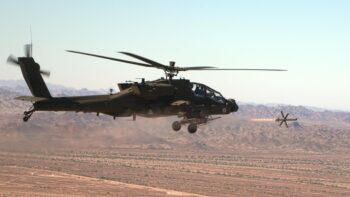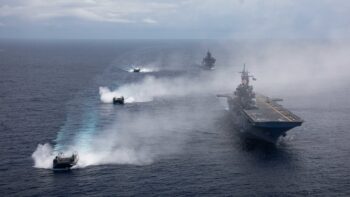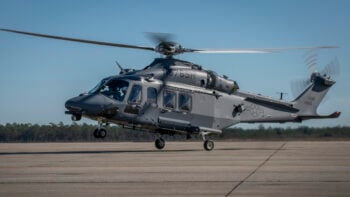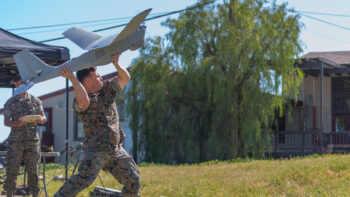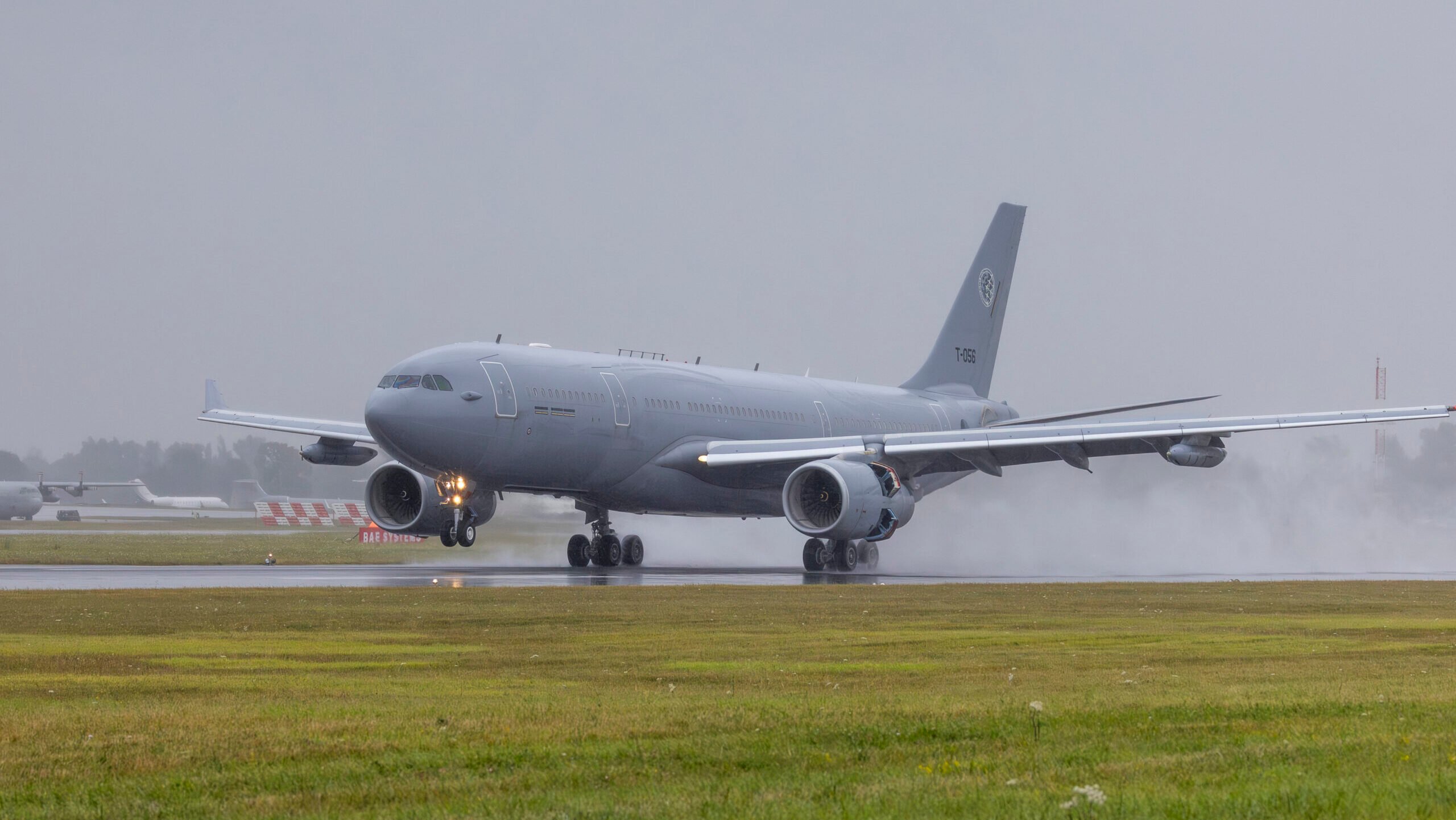
An Airbus A330MRTT lands at RAF Fairford, England, during the Royal International Air Tattoo 2023. (Airbus Defence and Space)
BELFAST — Airbus has taken the first steps in the potential development of a new Multi Role Tanker Transport Aircraft (MRTT) based on the A330neo commercial airliner, with hopes the future aircraft could be market ready by the end of the decade.
“We are thinking about the [A330]neo, it’s a very natural evolution of our [tanker] solution,” Maria Angeles Marti, Head of Tanker and Derivatives at Airbus Defence and Space, told reporters today. “We are going to go from the A330-200 to the evolved A330neo.”
The first steps include derisking studies for the potential new MRTT, as reported earlier by Flight Global and Aviation Week.
According to Angeles Marti’s remarks, provided by the company to Breaking Defense, she said that the new A330neo Trent 700 engines will provide greater fuel efficiency for operators and include different wings to the A330-200. She described the wings as a “little bit more flexible” than the older A330.
The new neo wing design delivers lower induced drag and higher lift “at all speeds and flight phases,” which in turn generates aerodynamic efficiency, lower fuel burn and increased range, according to Airbus company literature. The wingspan of the aircraft is an extraordinary 64 meters, just as wide as the fuselage is long.
Airbus has started derisking activities to consider the practicalities of converting the A330neo into a tanker, in which the manufacturer has a “high level of confidence,” according to Angeles Marti.
“The risk that we will take putting the pods, the technology on the A330neo is very low. We will probably have to imagine this scenario for the end of this decade,” she said.
Under wing pods are an essential part of the current A330 tanker as they enable hose and drogue refueling at an expedited fuel offload rate, meaning receivers are not overly burdened with long refueling intervals. Airbus says the pods are capable of refueling NATO aircraft or probe equipped receivers like the Eurofighter Typhoon, Tornado or F/A-18 Hornet. An Airbus-made Aerial Refueling Boom System is used when refueling receptacle equipped fighter jets like the American-made F-35 and F-16.
As of August 2023, a total of 76 A330MRTT aircraft had been ordered by Australia, France, NATO, Saudi Arabia, Singapore, South Korea, the United Arab Emirates, the UK, Spain and Canada, according to Airbus figures.
The decision to explore development of a A330neo tanker comes less than a month after Lockheed Martin abruptly ended a partnership with Airbus on their A330MRTT-based LMXT proposal, a joint effort originally aimed at securing the US Air Force’s(USAF) KC-Y tanker program.
Lockheed quit the project by declaring that it would not be responding to a USAF KC-135 fleet recapitalization Request for Information (RFI), in a bid to instead concentrate on other programs like the Next-Generation Air-Refueling System (NGAS) effort. Airbus has since vowed to go it alone and previously told Breaking Defense it still intends on responding to the RFI.
The USAF had initially pushed KC-Y as a “bridge tanker” acquisition for around 175 aircraft and as an interim solution before pursuing the next generation tanker KC-Z effort, now NGAS.
Andrew Hunter, Assistant Secretary of the Air Force for Acquisition, Technology and Logistics said in March that the service is edging toward buying an additional 75 Boeing KC-46A Pegasus tankers, making for uncertainty around a competition being staged that might include LMXT.
As for how Airbus’s next-generation A330neo-based tanker will fit into things, there are years to sort that out.
Army planning consolidation roadmap for loitering munitions and small drones
Army acquisition head Doug Bush said he and Army Futures Command head Gen. James Rainey expect to have a plan rolled out sometime this summer.

















